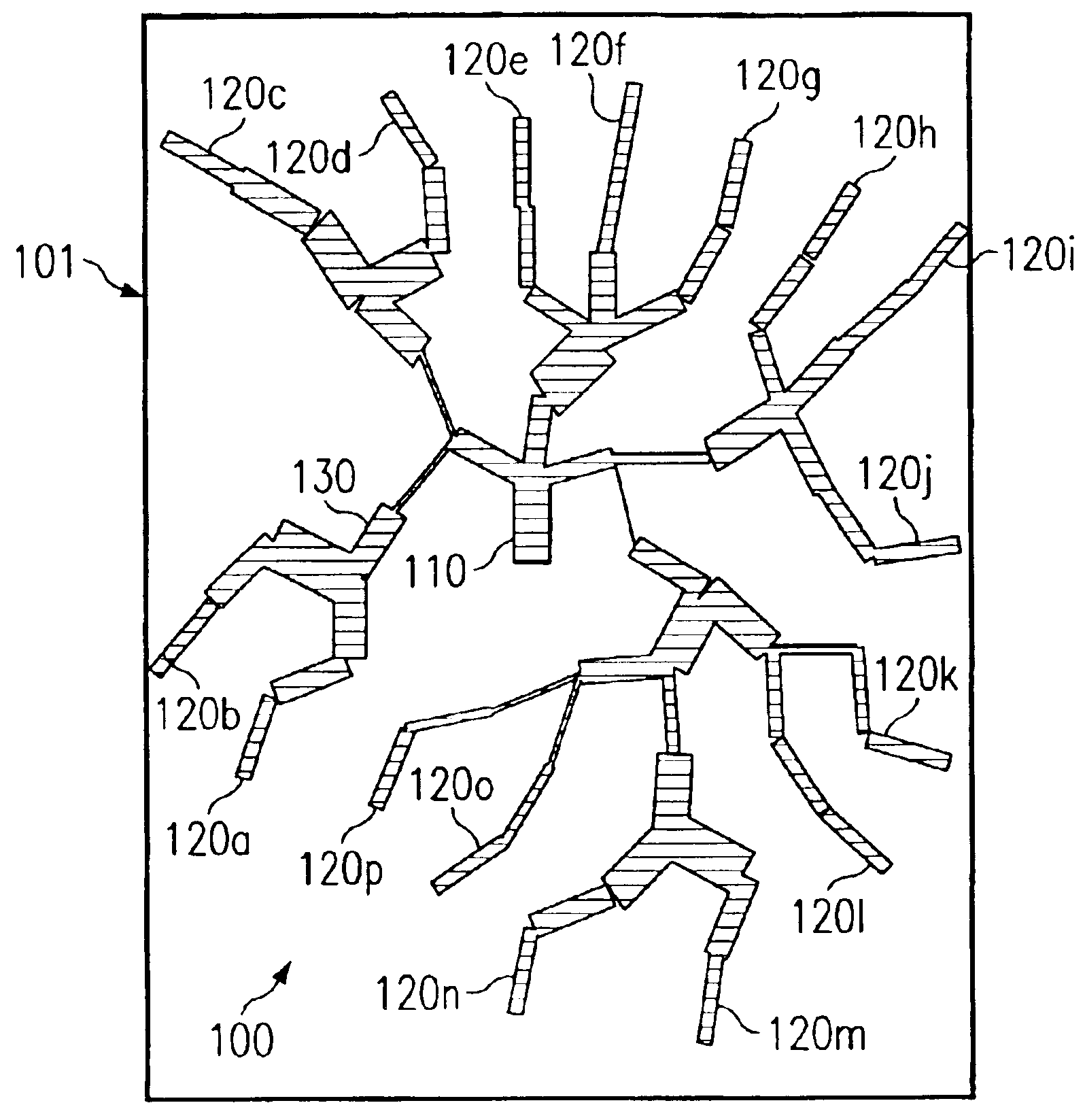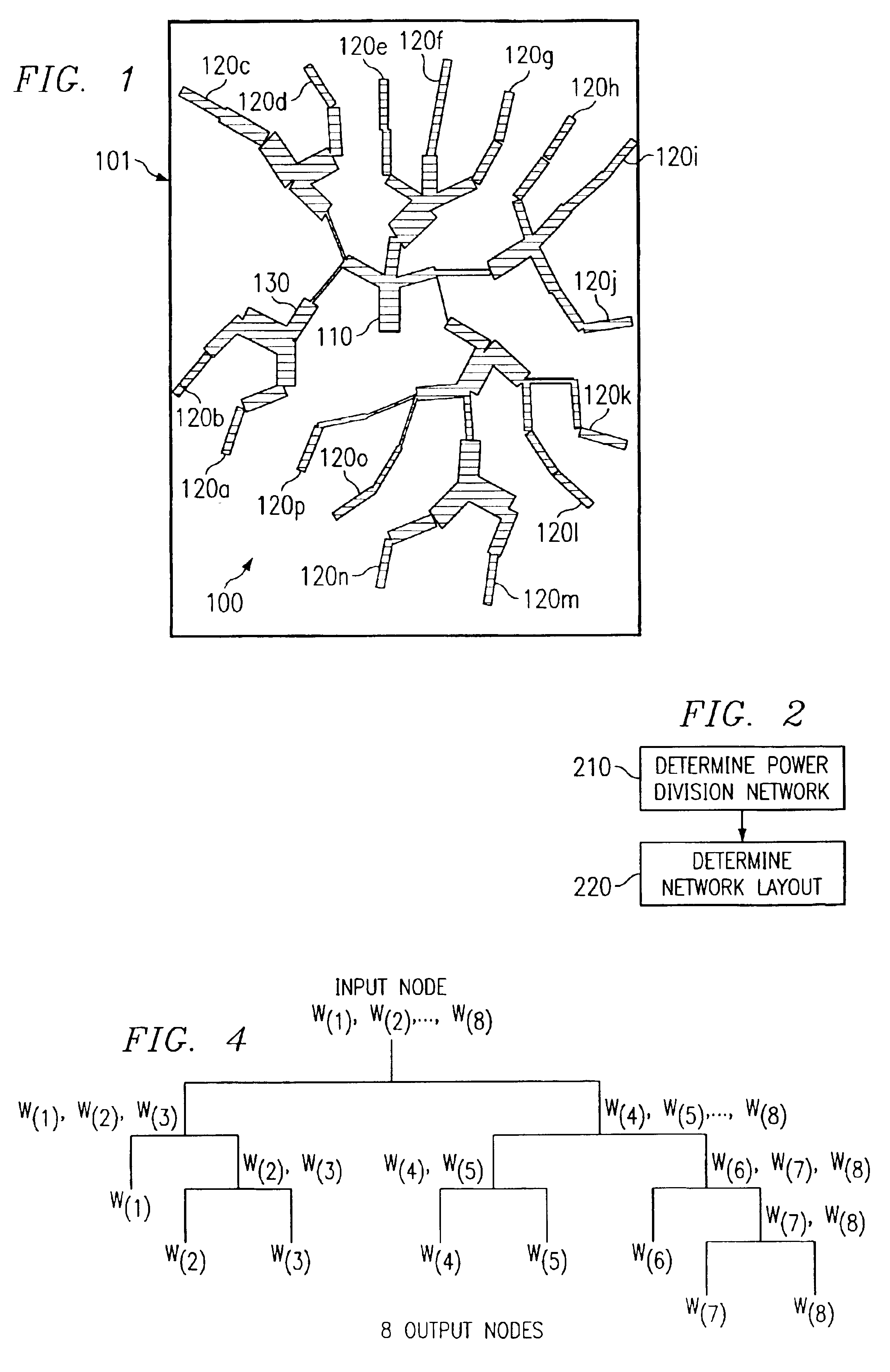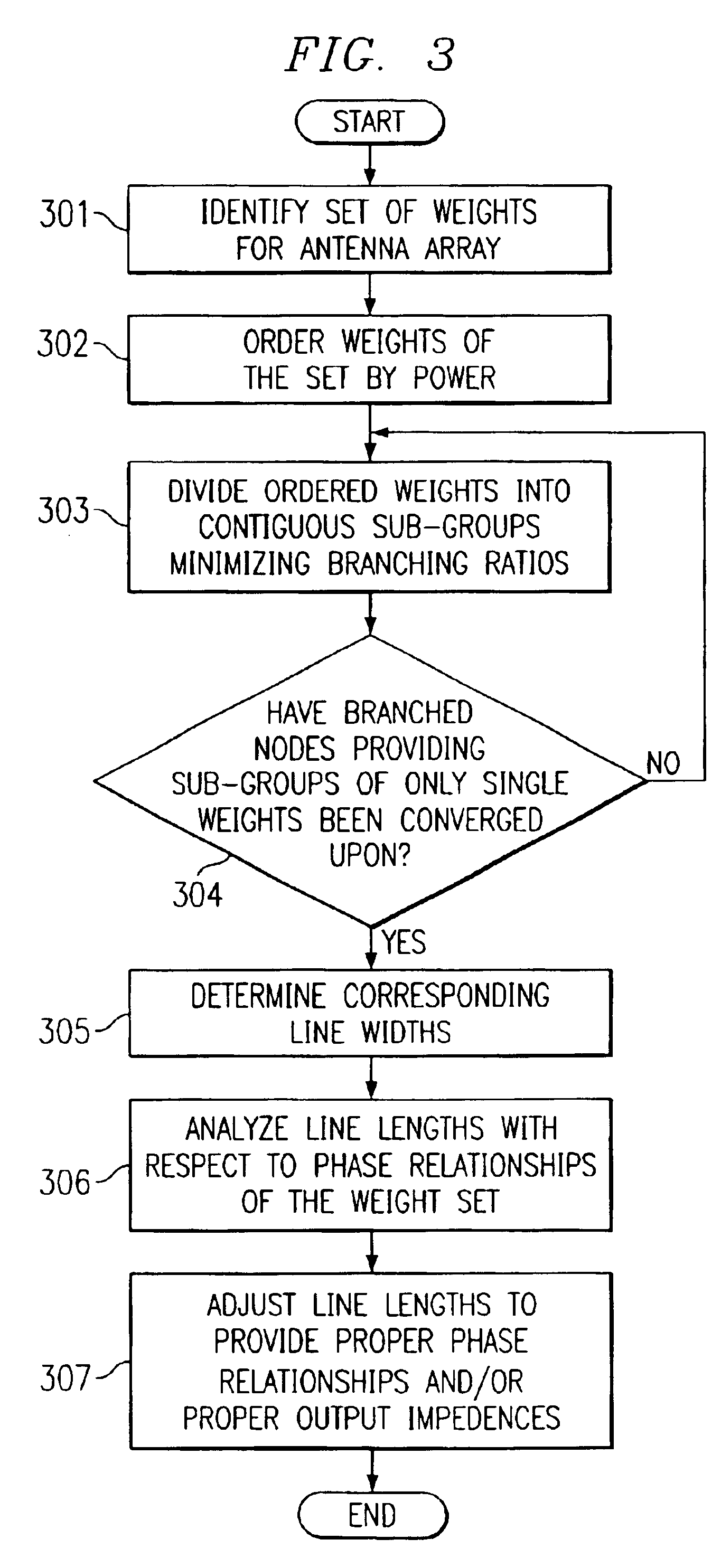Generating arbitrary passive beam forming networks
- Summary
- Abstract
- Description
- Claims
- Application Information
AI Technical Summary
Benefits of technology
Problems solved by technology
Method used
Image
Examples
Embodiment Construction
[0027]Providing radiation pattern shaping, such as shown in the above referenced patent applications entitled “Passive Shapable Sectorization for Cellular Networks” and “Passive Shapable Sectorization Antenna Gain Determination,” may utilize a passive beam forming network that produces a fixed number of RF outputs (e.g., 8, 12, 16, etc.) with specified complex weights (gains and phases), corresponding to the excitation signals fed to antenna element columns of an antenna array. Such a passive beam forming network may be implemented by etching a series of microstrip lines on a PCB board, referred to herein as a “personality card”. FIG. 1 shows an illustrative embodiment of board 101 having passive beam forming network 100 of the present invention disposed thereon.
[0028]The aforementioned weights are preferably derived from the desired antenna radiation pattern and a personality card of the present invention may instantiate the weights by dividing the power input at an input node (e.g...
PUM
 Login to View More
Login to View More Abstract
Description
Claims
Application Information
 Login to View More
Login to View More - R&D
- Intellectual Property
- Life Sciences
- Materials
- Tech Scout
- Unparalleled Data Quality
- Higher Quality Content
- 60% Fewer Hallucinations
Browse by: Latest US Patents, China's latest patents, Technical Efficacy Thesaurus, Application Domain, Technology Topic, Popular Technical Reports.
© 2025 PatSnap. All rights reserved.Legal|Privacy policy|Modern Slavery Act Transparency Statement|Sitemap|About US| Contact US: help@patsnap.com



